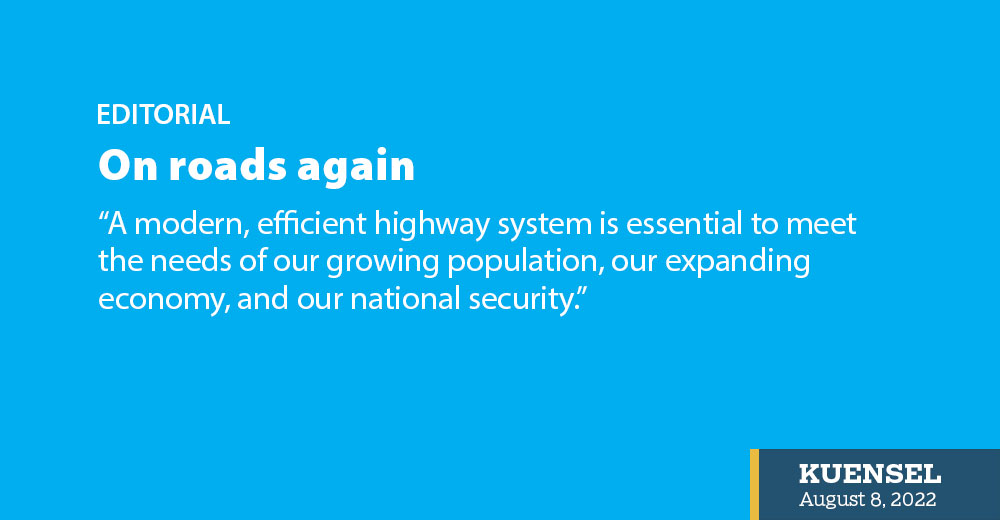“A modern, efficient highway system is essential to meet the needs of our growing population, our expanding economy, and our national security.”
This is US President Dwight D. Eisenhower in 1955. And he went on to say: “We had a traffic jam back in those days. It is not surprising, then, that congestion today is no longer a jam. In and near most industrial areas, traffic amounts practically to a blockade.”
Bhutan is facing this reality today in bigger towns. In places far away from the thromdes, the problem takes on a different, desperate dimension.
Bad roads is one; being in the heart of the Himalayas, we have the very idea of connectivity to set it right. We have not been able to harness the power of road connectivity.
While forgetting the usefulness of roads for the nation’s economic development, our focus has largely been on reducing road accidents and fatalities by 50 percent by 2030. This is not a bad goal considering the increasing number of fatalities related to roads per year.
It’s the management of highway, city and feeder roads that is the problem.
In Thimphu and Phuentsholing, children waiting to cross a busy road is a sobering sight. When our roads can’t handle the rapidly increasing traffic, properties and lives are at risk.
Between 2010 and 2021, road accidents claimed 1,151 lives. Human error remains the leading cause of motor vehicle accidents. This finding is not surprising. What is more concerning is how we are putting up with the same reports that dish out the same findings year after year.
The decade’s goal for the Road Transport and Safety Authority is to reduce the number of road-related deaths and injuries. The goal can be more focused. “While motor vehicle accidents are unpredictable, most road crashes are preventable.”
Safety regulations, sensitisation and awareness regularly will be key for the Authority is preparing to roll out. But then, it will have to do more.
Monsoon is here. Most roads in villages and places far away from the capital are in bad condition. This issue is being discussed in gewog and dzongkhag meetings.
Among the many interventions that are likely to come include enhancing traffic signages, road markings and early warning of road conditions in collaboration with the Ministry of Works and Human Settlement, Royal Bhutan Police and the local governments. Such collaboration can certainly bring marked improvement in safety standards and driving discipline.
The fact is that roads are important; the better the road, the better. What is clearly lacking is the vision that recognises the significance of road to a nation like Bhutan in terms of safety and easy connectivity.


